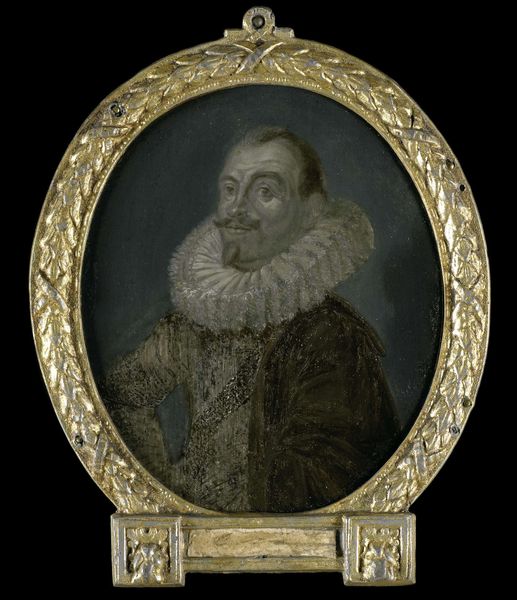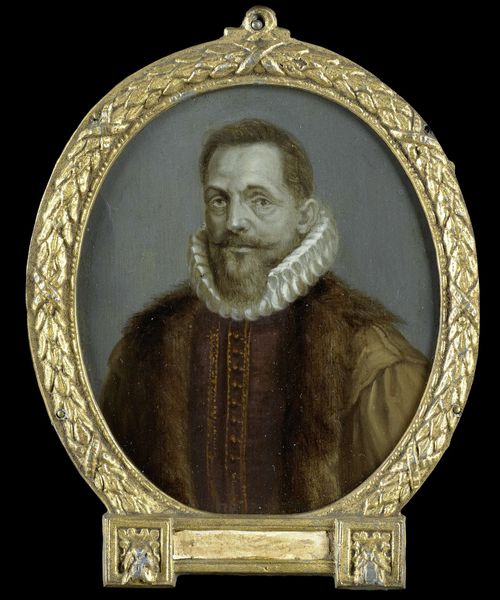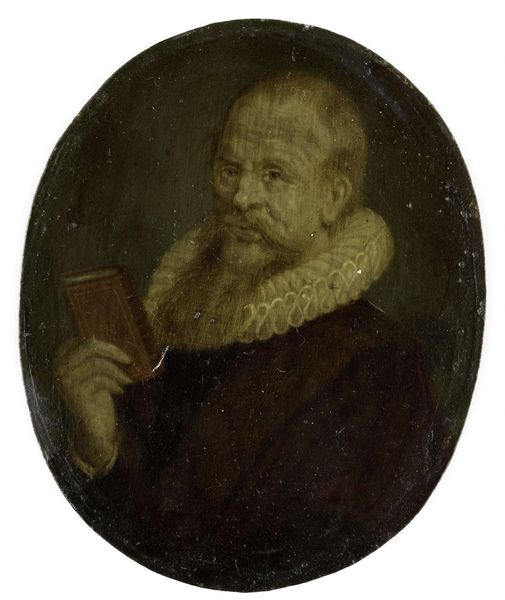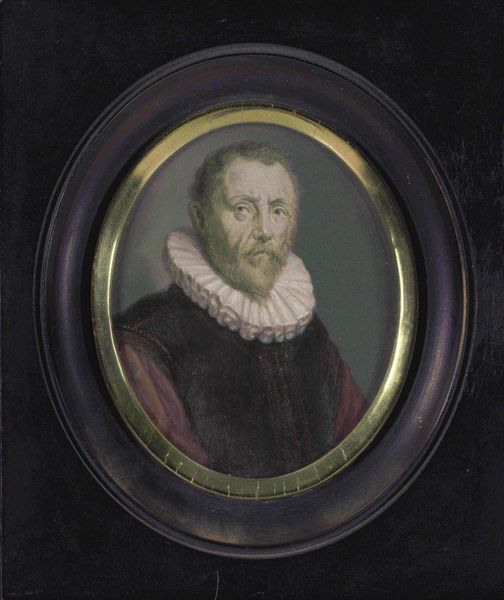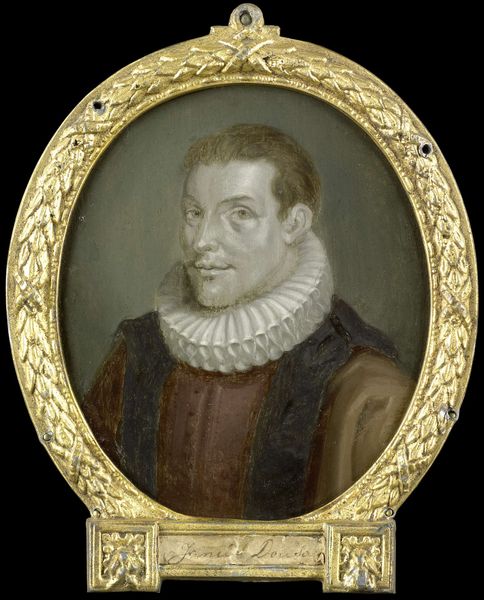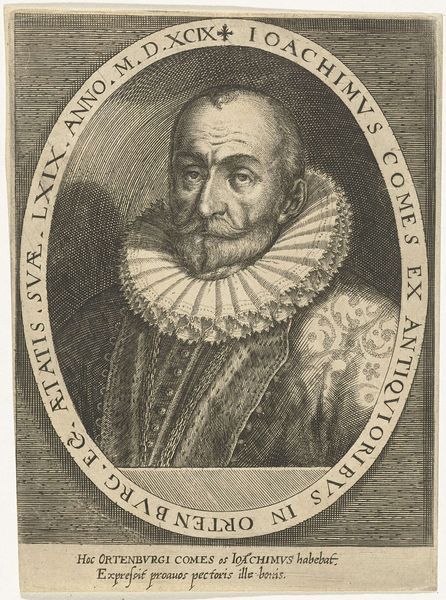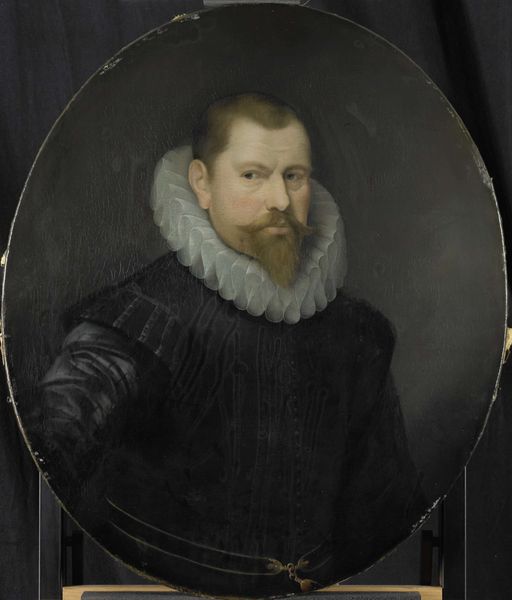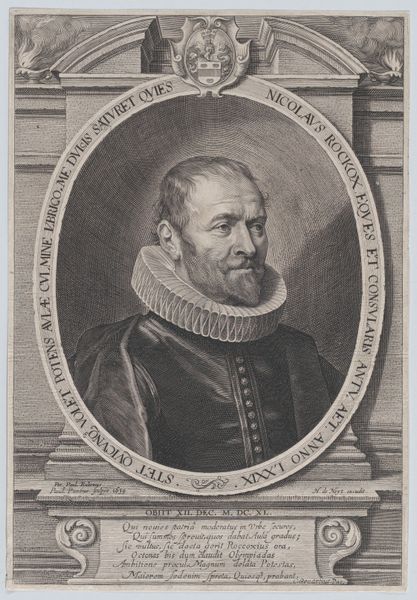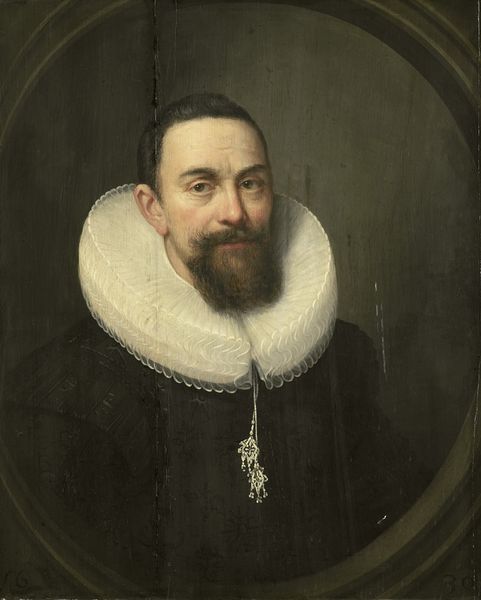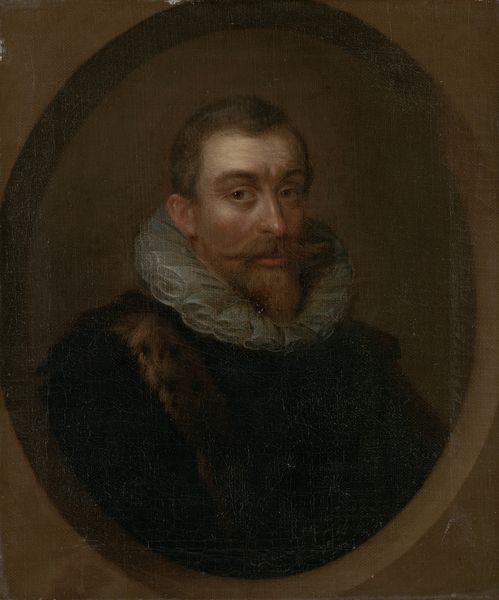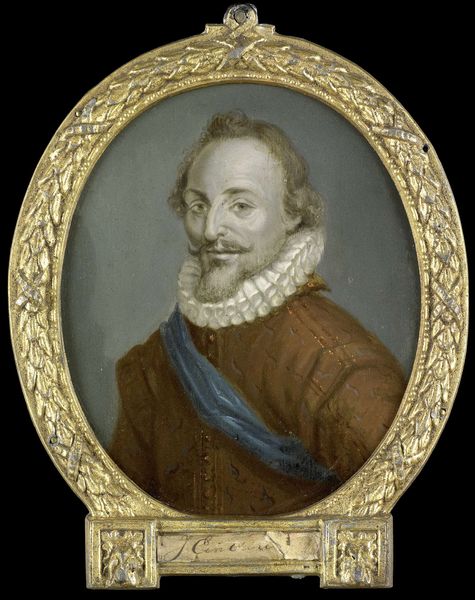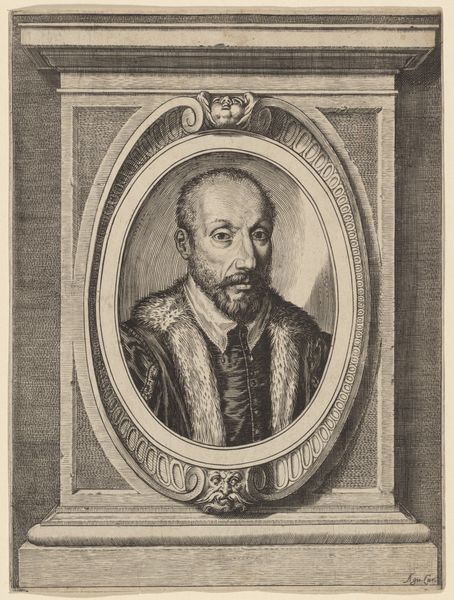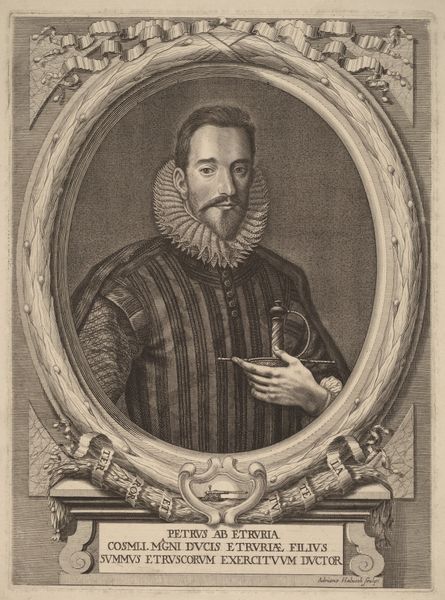
painting, oil-paint
#
portrait
#
baroque
#
painting
#
oil-paint
#
sculpture
#
genre-painting
Dimensions: height 11 cm, width 9.5 cm
Copyright: Rijks Museum: Open Domain
Editor: We’re looking at Arnoud van Halen’s "Portrait of Samuel Ampzing, Clergyman and Poet in Haarlem," created sometime between 1700 and 1732, using oil paints. The fine detailing is quite remarkable! What do you think strikes you most about this piece? Curator: What intrigues me is the staging of identity. Here we have a portrait within a very ornate frame, clearly designed for public consumption. How does this carefully constructed image speak to Ampzing’s role as a clergyman and poet in Haarlem? Editor: That's interesting. I hadn’t considered the relationship between the subject and his public image so directly. I was more focused on the book he's holding; does the frame, perhaps, amplify the importance of his scholarship? Curator: Precisely! The book is an attribute, signifying knowledge and learning. But the frame elevates Ampzing, positioning him within a visual language of authority and respectability. It’s a Baroque sensibility; even a somber subject like this becomes a pronouncement about social standing and cultural significance. How might viewers at the time have interpreted that message? Editor: Maybe the gold frame was ostentatious even back then. Do you think people from other social classes would have felt excluded from this imagery, unable to relate to the message it sends? Curator: Absolutely. These kinds of portraits reinforced social hierarchies. The choice of displaying one’s portrait in such a manner, particularly one of a religious leader and scholar, served a didactic function, subtly reminding people of their place within the social structure. Editor: I guess, more than just an individual portrait, this functions as a visual statement of societal power. Curator: Indeed. Examining it through the lens of social and cultural history brings a fresh perspective, doesn’t it? Editor: It certainly does! It really highlights how art can simultaneously reflect and shape public perception.
Comments
No comments
Be the first to comment and join the conversation on the ultimate creative platform.
